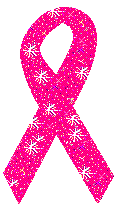When Ruben and I are filmed dancing, I always critique our performance and think how it could have been better. Believe me, I am my own worse critic! In the same way, I study still photos of tango dancers, and it's amazing how obvious technique shows up in snapshots (I'm referring to candid shots, not posed photographs.) You can learn a great deal by paying attention to these captured moments--surprisingly more than by watching YouTube videos.
I love watching the parade of dancers passing by my table in the milongas. Time spent not dancing can be used well by observing and listening. That's also part of the tango process--immersion of all the senses. And it's lovely to know that there is not only one correct way to dance tango, that there is room for who you are.
Gavito used to say, "In a milonga, don't watch the good dancers, but the bad ones so you can see what not to do!"
Take this photo below: (I've smudged out the faces because I don't want to embarrass anybody. I'm sure there are awkward pictures of Ruben and me out there too, as ungraceful moments can happen to anybody. And if you see any like that of us, I hope you learn something.)
Look at the couple on the left. He has planted himself firmly with his weight between his two feet, his right knee super-bent, his posture and his hyper-extended back as sturdy and unmoving as a tree trunk, while trying to lead his partner into a gancho. He's not so much dancing as growing roots. The poor lady has no space for her left foot and the right one is sickled, so she's pigeon-toed trying to keep her balance. There is little connection between them. (However I do like her left arm and his right.)

The couple on the right, however, have a relaxed posture, are connected, each has their weight on one side and they are prepared to continue with the next step of the dance using their free feet. The lady's left arm could be higher, the embrace less wimpy, but they look like they are moving and dancing together, not growing branches and leaves.
There is always something to be learned. What do you look for in tango photographs?
For more on photo study for self-correction go here.

2 comments:
What a great post! I was so terrified of seeing video of myself dancing when one of partners and I decided to take the leap and get recorded. I did spend the first viewing mostly flinching at my mistakes. But it makes it so very clear to see what you're doing and relate it to how it feels. A teacher can tell you until they're hoarse how something isn't working right - but until you really see yourself doing it, it's too abstract to address. In pictures and videos I can zero in on my posture, my embrace etc. You're right - you do learn so much faster with that as a tool.
Great post, Cherie. Teachers SHOULD teach their students to self-correct. It is better for everyone.
Post a Comment